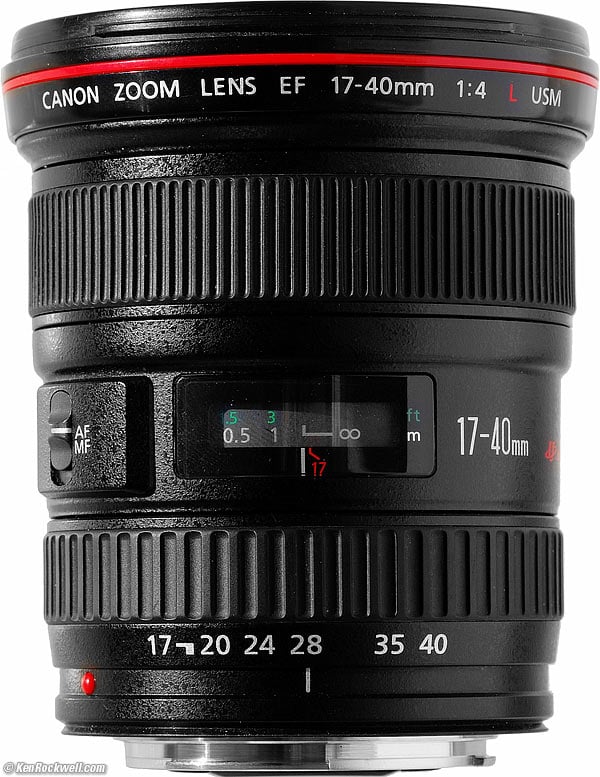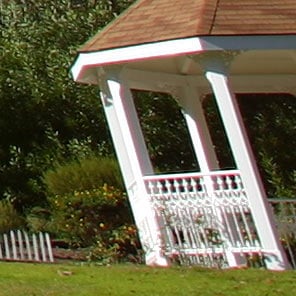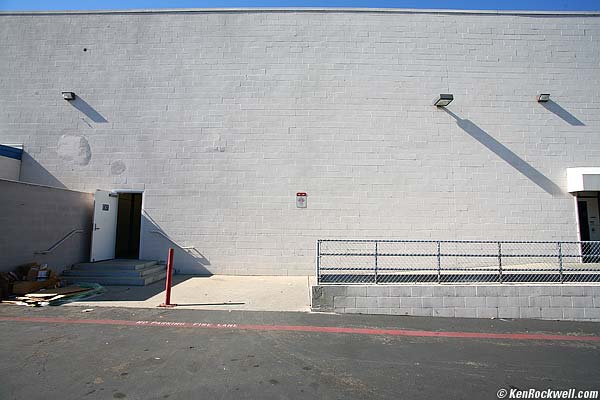Home Donate New Search Gallery Reviews How-To Books Links Workshops About Contact
Canon
17-40mm f/4 L
© 2006-2012
KenRockwell.com
Introduction Specs Performance Compared Recommendations
Canon 17-40mm f/4 L (77mm filters, 16.7 oz. /474 g, about $850). enlarge. This free website's biggest source of support is when you use these links, especially these directly to it at Adorama, at Amazon, or at eBay (see How to Win at eBay) when you get anything, regardless of the country in which you live. Thanks for helping me help you! Ken.
July 2014 Canon Reviews Canon Lenses All Reviews
NEW: Canon Ultrawide Lens Sharpness Comparison.
Canon Ultrawide Lenses Compared
Canon 17-40mm Sample Images from Yellowstone, August 2009
Canon Ultrawide Lenses Compared
Canon 16-35mm f/4 L IS (2014-today)
Canon 16-35mm f/2.8 L II (2007-today)
Canon 16-35mm f/2.8 L (2001-2007)
Canon 17-40mm f/4 L (2003-today)
Canon 17-35mm f/2.8 L (1995-2001)
Canon 20-35mm USM (1993-2007)
Canon 20mm f/2.8 USM (1992-today)
Canon 20-35mm f/2.8 L (1989-1995)
Tokina 17-35mm f/4 (2011-)
INTRODUCTION top
Introduction Specs Performance Compared Recommendations
|
Adorama pays top dollar for your used gear. I use these stores. I can't vouch for ads below.
|
Read the rest of this review if you like, or stop here and know that I bought a Canon 17-40mm f/4 L for myself after having it and the more expensive Canon 16-35mm f/2.8 L on loan for a month.
The 17-40mm f/4 L is a better, lighter and newer lens than the fatter and more expensive 16-35mm. (I still look forward to trying the even more expensive and heavier 16-35mm f/2.8 L II.)
I'll forgo the wider view for an overall larger zoom range, more consistent optical performance and less weight.
Good News:
1.) Excellent optics.
2.) Consistent results.
3.) Inexpensive (for this class).
4.) Light weight.
5.) Well made.
6.) The largest zoom ratio of any ultrawide: 2.4 : 1 (40/17 = 2.4).
Bad News:
Not much , so I'm reaching for:
1.) More ghosts than the 10-22mm EF-S, but less than the 16-35mm L.
2.) Complex distortion, typical of every other superwide zoom, difficult to remove if you're trying to replace a view camera. Easily corrected with DxO software.
Basics
This is my favorite ultra-wide lens because, on my Canon 5D full-frame, it's sharper than my Nikon 12-24mm on my D200 and sharper than the Canon 10-22mm on a Rebel XTi.
It weighs much less, cost less than half as much and gives me more consistently sharp results than the Canon 16-35mm f/2.8 L.
It's also wider than the Nikon lens on Nikon. It's not quite as wide as the 10-22mm on Canon 1.6x cameras and not as wide as the 16-35mm. If you need the widest possible zoom, that's the 16-35mm L on a full-frame camera.
This 17-40mm L lens is for full-frame, film and 1.3x cameras like the 1D series.
The17-40mm f/4 and 16-35mm f/2.8 work great on the 1.6x sensor cameras (Rebel, 30D, 20D), but for those cameras the 18-55mm EF-S lens, for one sixth the price, is lighter and more agile. None of these is wide on a 1.6x camera. Even this 17-40mm on a 1.6x camera only covers a range similar to what a 27-65mm lens would on a 35mm film camera. For these 1.6x cameras, you have an easy choice: get the 10-22mm EF-S, which covers the same range on those cameras as a 16-35mm lens covers on full-frame cameras.
Since this 17-40mm L and the 16-35mm L do the same thing on full-frame cameras that the 10-22mm EF-S does on 1.6x cameras, I'll be making constant comparisons among them throughout this review.
SPECIFICATIONS top
Introduction Specs Performance Compared Recommendations
Name
Canon calls this the Canon Zoom Lens EF 17-40mm f/4 L USM. This means:
EF: Electronic Focus. All modern Canon lenses do this.
L: Expensive.
USM: Ultra-Sonic Motor: It focuses silently.
Focal Length: 17-40mm.
Used on a 1.3x camera it gives angles of view similar to what a 21-50mm lens would give on a 35mm film camera. On a 1.6x camera it gives angles of view similar to what a 28-65mm lens would give on a 35mm film camera. o
Maximum Aperture
f/4 at all focal lengths.
Optics
12 elements in 9 groups, including three aspherics and one of UD glass. UD glass is the same as Nikon's ED glass, which helps reduce color fringing.
Diaphragm
7 mostly straight blades stopping down to f/22.
Filter Size
77mm, the pro standard. Plastic filter threads. There's also a gel holder on the rear.
Close Focus
11" (0.28m) from the image plane (the back of the camera). Since the lens sticks out 5-1/2" (14cm) from the image plane, that means I measured close focus at only 5-1/4" (13 cm) in front of the lens!
Hood
EW-83E for full-frame cameras. Try a smaller hood like the EW-83DII for smaller sensor cameras. (Same as 16-35mm.)
Case
LP1319. (Same as 16-35mm.)
Size
3.288" diameter x 3.801" extension from flange (83.5 x 96.56mm), measured.
Weight
16.705 oz. (473.6 g), measured, naked. (4.440 ox, 125.85g less than the 16-35mm L))
Introduced
May 2003.
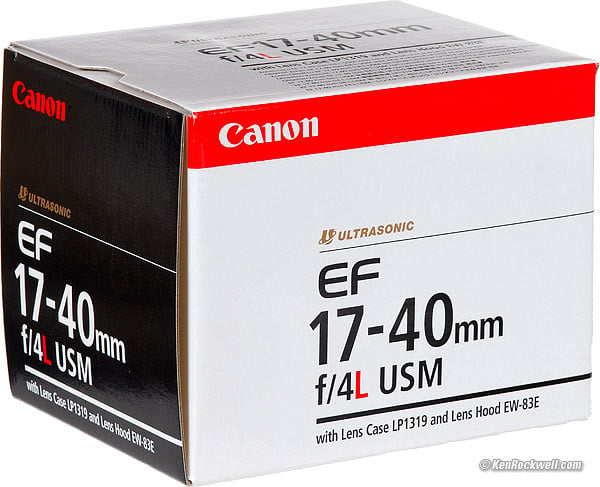
PERFORMANCE top
Introduction Specs Performance Compared Recommendations
Autofocus Bokeh Color Color Fringes Construction Distortion
Falloff Filters Flare Flash Macro Serial # Sharpness IS Zooming
It's a great lens. For less money than many other lenses, it offers better performance.
back to Performance or back to Introduction.
Like most wide lenses, the focus is fast and accurate. No problems here.
Speed
AF speed is more than enough, at least for me.
Sound and Noise
It's almost silent.
Manual Focus: Plastic on plastic.
Autofocus: About the same: plastic on plastic.
Ease-of-Focusing
Excellent.
Autofocus Accuracy
I usually get perfect autofocus. It's unusual to get a miss, although it will happen. It is much better than the 16-35mm L I tried.
There is no offset, except at one foot where it tends to focus a little past the subject at 40mm.
Manual Focus
Just grab the ring at any time, no need to move any switches. If you don't want AF, set the AF / MF switch to MF.
Focus Breathing
Breathing is a motion picture term which refers to what happens as you pull (change) focus from near to far. In movies we do this as the conversation goes from one actor to the next. As a viewer you don't notice it because your eyes are also going between actors, but if you pay attention, you can see focus move from near to far. There are people called focus pullers whose sole job is to do this.
It doesn't matter in still photography, but I look for it.
Ideally nothing happens and the image size doesn't change when focus is pulled from near to far. This distracts audiences if the image changes size slightly as the conversation goes from actor to actor.
The Canon 17-40mm f/4 L does a little weird thing I've seen in my Nikon 17-35mm zoom and the Canon 16-35mm L: look at a line along the bottom of the frame as you focus at the wide end and you'll see it change shape as the distortion changes!
Fun, but not significant.
back to Performance or back to Introduction.
Bokeh is OK in the center, but sloppy in the corners. it's better at the large apertures, and looks worst in the corners stopped down a bit. As an aspherical optic, it will do weird things.
Bokeh is never a big deal for ultra wides since everything is usually in focus, but if you have a subject one foot away (my hand) here's what you'll see:
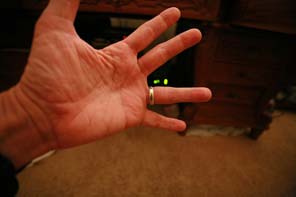 |
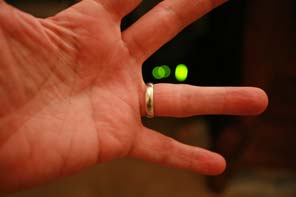 |
Full image, 5D, 17mm at f/4 |
Full image, 5D, 40mm at f/4 |
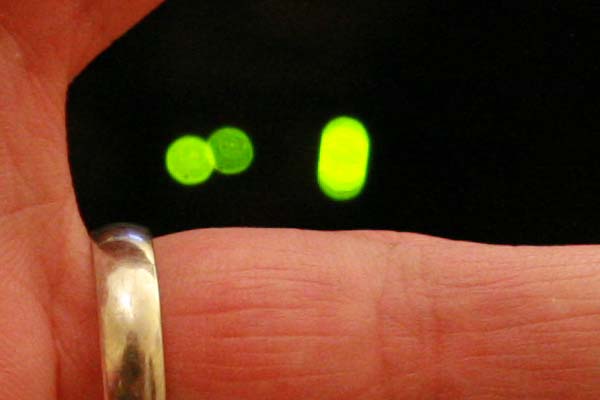
100% crop from 5D, 17mm at f/4
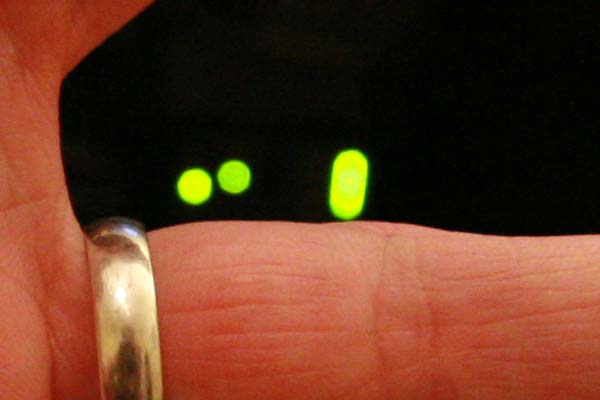
100% crop from 5D, 17mm at f/5.6
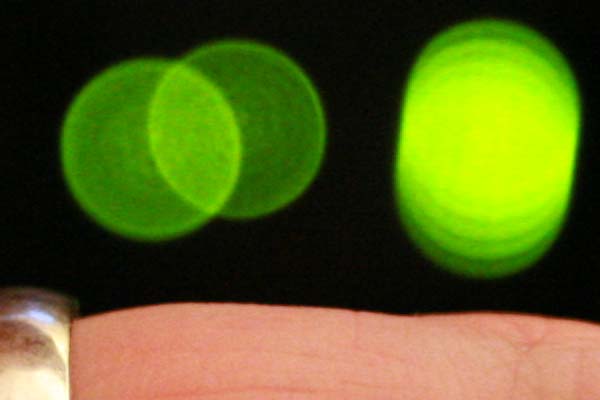
100% crop from 5D, 40mm at f/4
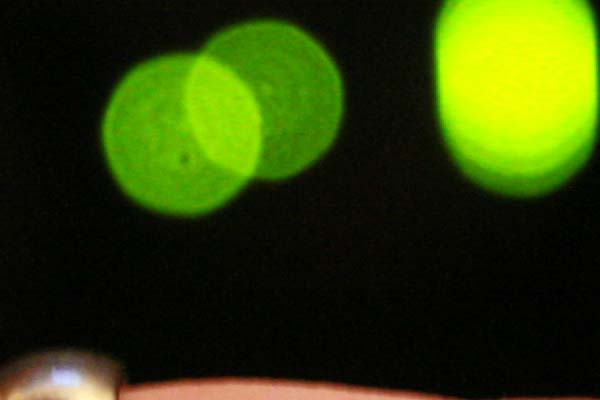
100% crop from 5D, 40mm at f/5.6
CORNER COLOR FRINGES
(Lateral Chromatic Aberration or LCA)
back to Performance or back to Introduction.
On a full-frame 5D, it has some color fringes at the widest end and none at the longer end. Here are the full guide images from which the crops are taken:
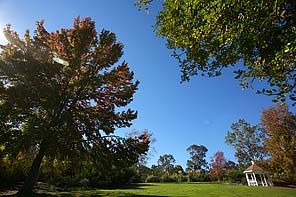 |
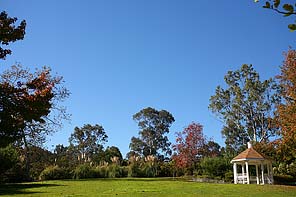 |
Full image, 17mm |
Full Image, 35mm |
|
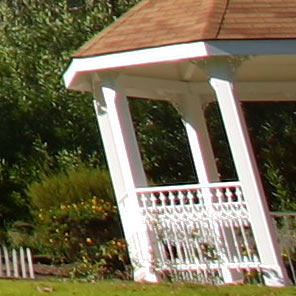 |
100% crop from 5D at 17mm |
100% crop from 5D at 21mm |
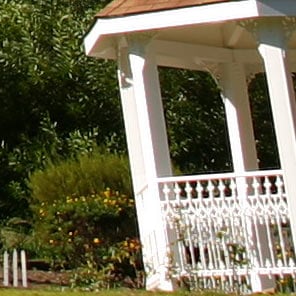 |
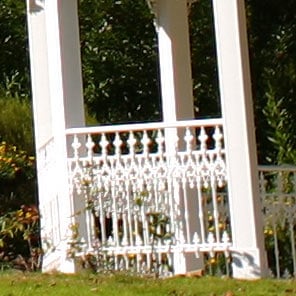 |
100% crop from 5D at 28mm |
100% crop from 5D at 40mm |
These were shot in program mode, f/9 at 1/125, ISO 50. Considering you'd need a 44" (1.1m) wide screen to see the entire images, I'd say this is pretty good.
back to Performance or back to Introduction.
Color rendition is neutral and matches my other lenses.
back to Performance or back to Introduction.
It has a rubber gasket on the lens mount to keep crud out of your camera.
Exterior
Plastic.
Filter Threads
Plastic.
Switches
Plastic.
Mount
Metal.
Internals
Metal.
Noises when shaken
a lot of clunking (this is normal).
Made in
Japan.
back to Performance or back to Introduction.
Of course the sides and corners appear to be stretched out at 17mm. That's the whole point of a 17mm lens.
I'm speaking about rectilinear distortion, or the tendency to curve lines which are supposed to remain straight.
The distortion of the 17-40mm L is typical for an advanced ultra-wide zoom, which means that it's complex and difficult to correct completely if you're looking through a micro scope. This is because instead of curving lines into simple curves, it subtly can bend them several ways at once.
It's unlikely you'll ever notice this unless you look for it with deliberately devious tests. For example, here's a typical shot loaded with straight lines that looks great:
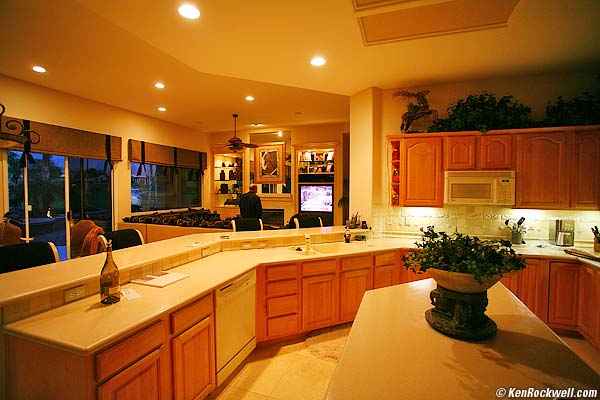
Interior. Canon 17-40mm at 17mm, f/4 @ 1/30, ISO 800, full-frame Canon 5D.
Shots like this are the reason to own a 17mm: ultrawides exaggerate depth and make spaces look much larger than they are. Some of the verticals aren't perpendicular to the sides of the image because I hand-held the shot and didn't have the camera level. These lines aren't curved, they're merely crooked because that's how I held the camera.
Vertical lines at the sides of horizontal images remain nicely straight. The one on the right is tilted from my sloppy hand-holding, but I don't see it curving:
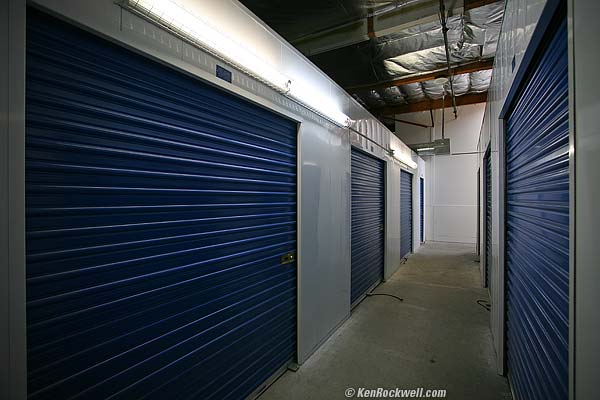
Urban Apartment Homes. 17-40mm at 17mm, full-frame Canon 5D.
The usual devious way to show distortion is with a brick wall.
Here's the proverbial Bad Photographers' Wall of Shame:
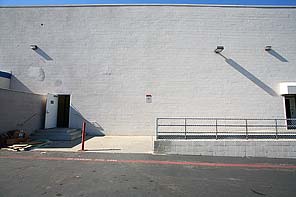 |
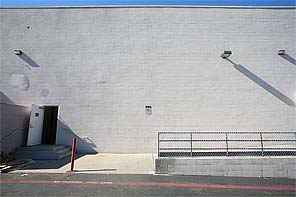 |
At 17mm, full-frame 5D |
At 20mm, full-frame 5D |
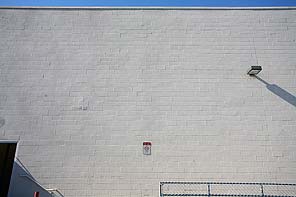 |
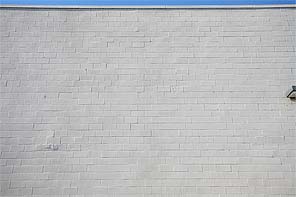 |
At 28mm, full-frame 5D |
At 40mm, full-frame 5D |
This looks reasonable, and distorts as much as other ultra wide zooms. Here's the shot at 17mm, the worst focal length, before and after Photoshop CS2's lens distortion filter using a value of +3.0 (roll your mouse over to see the after version):
Canon 17-40mm at 17mm, full-frame 5D. Mouse-over to see correction in PS CS2.
You'll see some residual waviness in the image after simple correction with Photoshop CS2's lens distortion filter using the figures that I calculated from my experiments in the table below. These figures are for you to enjoy in your photography. This is all © and registered, so you'll need permission to use these figures for anything like incorporating into your own software or books. Thanks! Ken.
15' (3m) |
50' (15m) |
|
17mm |
+3.5 |
+3.0 |
20mm |
+2.0 |
+1.5 |
24mm |
+0.0 |
0 |
28mm |
-0.5 |
-0.5 |
35mm |
-1.5 |
-1.2 |
40mm |
-2.0 |
-1.3 |
To fix distortion perfectly, use DxO software. Mouse over this image to see before and after DxO, which also fixes falloff and more.
Canon 17-40mm at 17mm, full-frame 5D. Mouse-over to see correction in DxO.
CONTINUED: Performance Page Two top
Introduction Specs Performance Compared Recommendations
Autofocus Bokeh Color Color Fringes Construction Distortion
Falloff Filters Flare Flash Macro Serial # Sharpness IS Zooming
Help me help you top
I support my growing family through this website, as crazy as it might seem.
The biggest help is when you use any of these links to Adorama, Amazon, eBay, B&H, Ritz, Calumet, J&R and ScanCafe when you get anything, regardless of the country in which you live. It costs you nothing, and is this site's, and thus my family's, biggest source of support. These places have the best prices and service, which is why I've used them since before this website existed. I recommend them all personally.
If you find this page as helpful as a book you might have had to buy or a workshop you may have had to take, feel free to help me continue helping everyone.
If you've gotten your gear through one of my links or helped otherwise, you're family. It's great people like you who allow me to keep adding to this site full-time. Thanks!
If you haven't helped yet, please do, and consider helping me with a gift of $5.00.
As this page is copyrighted and formally registered, it is unlawful to make copies, especially in the form of printouts for personal use. If you wish to make a printout for personal use, you are granted one-time permission only if you PayPal me $5.00 per printout or part thereof. Thank you!
Thanks for reading!
Mr. & Mrs. Ken Rockwell, Ryan and Katie.
Home Donate New Search Gallery Reviews How-To Books Links Workshops About Contact

